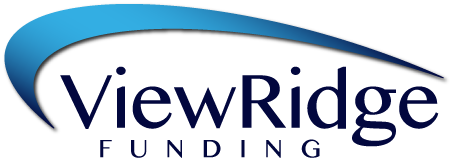Poor cash flow management is one of the biggest threats to a small business. Without enough cash, you can’t pay your employees or operating costs, and your company won’t be able to thrive and grow.
Here are 10 strategies to improve your business’s cash flow:
- Examine Your Expenses
Do you have a clear picture of what you are spending your money on? If not, take a long, hard look at all of the money going out of your company. Even small expenses can really add up. Are there any areas that you can cut back? Can you renegotiate or cancel any service contracts or unnecessary subscriptions? Sometimes just cancelling magazine and newspaper subscriptions, scaling back on office supplies, cutting ineffective advertising costs that aren’t generating leads, or getting rid of tools or software solutions that you don’t really need can help save you money and improve your cash flow.
- Send Invoices Promptly
In order to have a healthy cash flow, you can’t let your invoices pile up. Invoices should be sent out in a timely fashion, so you don’t have valuable cash tied up in unpaid invoices for longer than necessary. If your company is still doing manual invoices, consider automating some or all of the tasks to help speed up the process and ensure your invoices are always sent promptly.
- Outsource
It can be tricky to strike a perfect balance between being understaffed and overstaffed. Too many or too few employees can really hurt your cash flow. Review your staffing needs and think about if it makes more financial sense to outsource certain business tasks like social media, accounting, graphic design, appointment setting, or research to a freelancer, virtual assistant, or outside company.
- Implement Regular Cash Flow Monitoring
As a business owner, you need to know your what your cash balance is at all times. By monitoring your cash flow regularly, you can improve your cash flow projections. In addition, having a better understanding of the numbers will give you major insight into the money coming in and out of your business as well as a snapshot of the financial health of your company. Consistent cash flow monitoring is important for knowing where you stand today, when you can expect money coming in or going out, and how you can plan for tomorrow’s growth or cash flow disruptions.
- Secure a Line of Credit
Get ahead of potential cash flow problems by securing a line of credit to use in the event of a cash flow issue. With a line of credit, funds are always available whenever you need them. Since a line of credit is revolving, you can take some of if it or all of it as often as you choose when you’re struggling with cash flow. Once you’ve paid down the balance of the amount you’ve used, the funds replenish, and you can take them again.
- Renegotiate Terms with Suppliers and Vendors
Working with suppliers or vendors who offer flexible payment options can be extremely important to your cash flow. If your cash outflow doesn’t line up with when you usually receive your cash inflows, speak to your suppliers about the possibility of paying at a different time of the month so you can time your payments with your cash inflows. In addition, if you have a good rapport with your vendors, you may be able to negotiate for extended payment terms.
- Get Rid of Excess Inventory or Unused Equipment
Keeping excess or outdated inventory in stock that you don’t need is essentially keeping vital cash sitting on a shelf that you can’t use. Likewise, keeping equipment around that you aren’t using takes up space and keeps cash tied up. Clear out any leftover inventory by offering a promotion or special discount, and sell unused equipment that you no longer need.
- Make it Easier for Customers to Pay You
If you make it easy for your customers to pay you, you’ll likely get paid much sooner. Be sure to spell out how you can receive payment and offer a variety of payment possibilities so people can choose their preferred method of paying for an invoice. Having electronic payment options enable you to receive payment quickly and hassle-free.
- Consider Leasing Equipment Instead of Buying it
Equipment leasing can be a cost-effective method for a small business to have the use of equipment to grow their business, without having to purchase it outright. This can make a significant difference in cash flow, which can mean the difference between succeeding and failing for a business that is trying to grow.
- Offer Incentives for Early Payment of Invoices
Entice your clients to pay their invoices early with discounts for early payments. On the flip side, you should also have a strict policy in place that penalizes late payments. Make sure the terms are laid out in your contract so there are no questions about late penalties when you enforce it.
Cash is King Effective cash flow management is essential to keeping your small business afloat. ViewRidge Funding can get you the capital that your small business needs— providing additional cash flow for nearly every situation. Apply today and get approved in hours – there’s no cost or obligation and our single page application takes only minutes.

